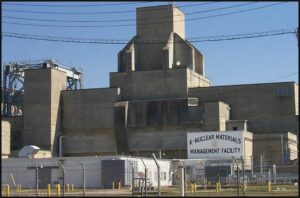
“Appalling” and “Abysmal”
How the Department of Energy addressed Governor McMaster’s and Attorney General Alan Wilson’s conflicting and sometimes harsh opinions regarding the future of surplus plutonium.
https://aikenchronicles.com/2024/01/22/appalling-and-abysmal/
The U.S. Department of Energy’s (DOE) National Nuclear Security Administration’s (NNSA) Final Surplus Plutonium Disposition Environmental Impact Statement (SPDEIS) was completed last month and announced in the Federal Register this past Friday, January 19th. A Record of Decision (ROD) is expected sometime in February, although that ROD might not result in any actual plans.
The Final SPDEIS is the fifth National Environmental Policy Act (NEPA) analysis addressing all or parts of 61.5 metric tons (MT) of surplus plutonium that has been conducted in the past three decades. During that time, the DOE/NNSA’s various contractors have processed and disposed of less than five tons of the surplus stockpile, and spent billions of dollars on a failed plutonium/Mixed Oxide (MOX) fuel factory originally intended to handle up to eighty percent of the surplus material. Major changes in plans have occurred at least five times.
The latest analysis was released almost twenty-seven years to the day of the the 1997 Record of Decision to consolidate all surplus, “non-pit” plutonium at DOE’s Savannah River Site (SRS) for up to fifty years; nearly sixteen tons at the time but later reduced to about twelve tons. Less than a ton of surplus plutonium has since been removed from the site.
Controversy over the storage decision began in 2002, and eventually resulted in the $600 million settlement between the federal government and the State of South Carolina in August 2020. That settlement requires DOE/NNSA to remove 9.5 metric tons from SRS by 2037. If the recent rate of transfer of plutonium waste from SRS to WIPP continues, that task will not be completed until well after 2040.
full article: https://aikenchronicles.com/2024/01/22/appalling-and-abysmal/
DOE photo: Old K-Reactor, now used to store plutonium and process it into waste to be dumped at WIPP in New Mexico